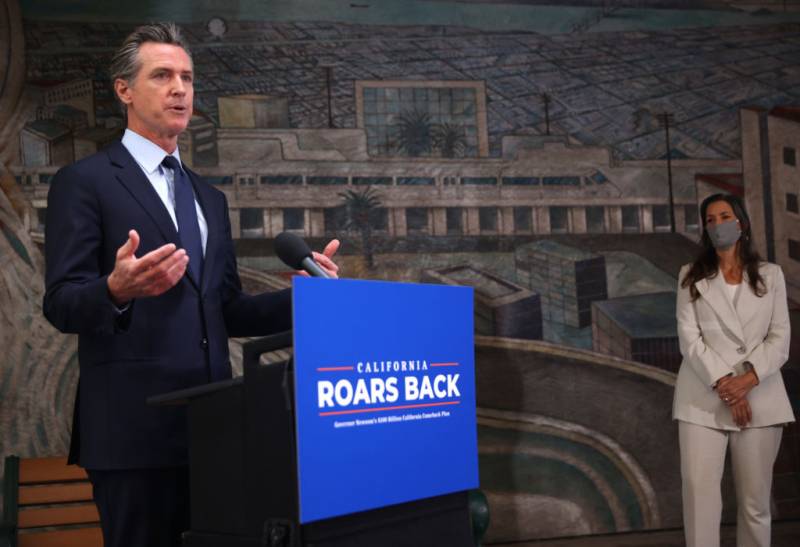That mind-boggling number indicates that “California isn’t just coming back. It’s roaring back,” he said.
“California Roars Back” has become the slogan of Newsom’s campaign to beat the drive to recall him from office.
By any standard, it’s a remarkable fiscal turnaround in a state that just one year ago was facing a $54 billion deficit, induced by rising expenditures and collapsing revenues due to the COVID-19 pandemic.
But when the respected nonpartisan California Legislative Analyst’s Office (LAO) released its budget analysis Monday, stating that the actual surplus was only $38 billion — half what Newsom cited — it triggered an inevitable social media storm of accusations, mischaracterizations and worse.
So, how could there possibly be such a large discrepancy in the size of California’s budget surplus?
In a tweet she would later delete, Bloomberg reporter Tiffany Stecker on Monday wrote, “@CAgovernor miscalculated the state’s surplus by double — it should be $38B, not $76B.”

That set others in the Twitterverse off and running, lobbing accusations that Newsom “lied” — or at least misled — California voters. Some of the Republican candidates running to replace him as governor quickly jumped on the bandwagon.
“Newsom used smoke and mirrors to inflate the size of his budget surplus, misleading Californians by $38 billion,” said Republican gubernatorial candidate Kevin Faulconer, the former mayor of San Diego, in an email to supporters. “If Newsom can’t be honest when he’s trying to sell good news, we can’t trust him when he’s dealing with the very real problems facing our state.”
So what’s the truth about the budget surplus? Not surprisingly, it’s a bit complicated.
For starters, “the term surplus does not have a legal or even formal budgetary definition,” said Ann Hollingshead, the LAO’s principal fiscal and policy analyst. “So this is just an informal word that we use to describe the condition of the budget.”
What then explains the vast difference between the surplus number offered by the governor and the LAO?
“The primary difference between our estimate and the administration’s estimate is just that we always exclude constitutional requirements from our definition of the surplus,” Hollingshead said. “So any money that is constitutionally required to be spent on a specific purpose, we don’t include that as part of the surplus. And it looks like the administration in this case did.”
So this gets us to the meaning of the word “surplus.” If by surplus you’re thinking something along the lines of extra money you didn’t anticipate previously having — like, say, a windfall — then the Newsom administration’s $75.7 billion figure is accurate. It’s how much additional revenue is estimated to be available to the state in the coming budget year that had not been anticipated just a few months earlier.
But nearly half of that pot is automatically required to be spent on K-12 schools and community colleges, per Proposition 98, with the small remainder committed to the state’s rainy day fund and debt payments.


